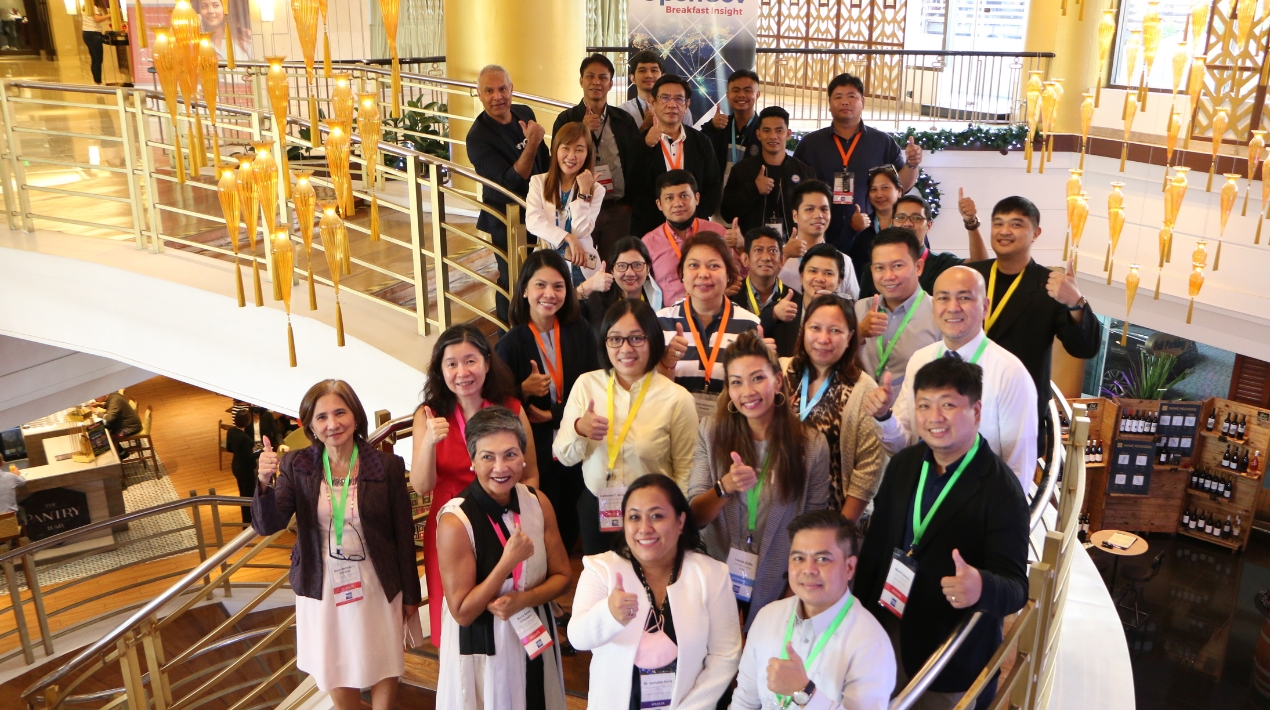
Communication remains the backbone of organisational operations and has been bolstered by cutting-edge technology. Many organisations have migrated from Public Switched Telephone Networks (PTSNs) to cloud communications, which resulted in faster and more efficient communications with vastly increased reach.
Cloud communications remain the primary solution for meeting the growing demand for effective organisational communications in the hybrid workplace. It is agile enough to adapt to ever-changing business environments while keeping mission-critical business functions unified on all levels.
Organisations can place and receive phone calls using cloud calling from phones and any internet-connected device, including computers and tablets, from any location with an internet connection.
Cloud communications’ inherent capacity enables organisations to expand as needed without regard to geographical boundaries quickly. It makes it simple for organisations to scale up to accommodate changing needs. Less capital expenditure means expansion can be undertaken and completed more quickly, resulting in increased
These possibilities make businesses more accessible and responsive to customers. Having scalability and flexibility in communications regardless is a vast advantage irrespective of a company’s geographical spread.
The OpenGov Breakfast Insight with the Philippines’ top public sector leaders on 6 December 2022 at the Dusit Thani Manila provided the current information on the benefits of the most recent cloud communications technology that can greatly empower the nation’s public, education, financial services and healthcare sectors.
Intensifying the Cloud’s Role in Fostering Digital Transformation

The adoption and implementation of cloud-based strategies are currently used by businesses of all sizes to boost growth and profits, says Mohit Sagar, CEO & Editor-in-Chief of OpenGov Asia. Moreover, cloud technology has drastically changed how businesses communicate.
Cloud technology is bringing massive change to how various sectors of modern-day digital communities interact with each other. Cloud communications vendors allow businesses to delegate management of their IT infrastructure by taking on provisioning, switching, data storage and security responsibilities. The cloud’s cutting-edge features and functionality facilitate unprecedented staff collaboration and communication across time and space.
These changes have transformed the way people work where employees experience increased levels of productivity. With the cloud, people have the option to follow the traditional work model, a hybrid one, or a purely remote work model. Such possibilities for workers also translate to added advantages for employers with geographical boundaries; hiring only locally has become passé.
A hybrid or remote work setting makes cloud communications a necessity. Collaborative technology like cloud communications allows employees to transition or shift from one work model to another without losing productivity, effectiveness or efficiency. However, Mohit cautions, remote and hybrid models can still fail if they are not built on the right technology.
As shared by one of the attendees, their company did not experience any downturn when the pandemic hit because they were prepared for remote work. The experience of this company highlights that preparedness with the right technology enables an organisation to weather a black swan event.
Having workers functional in various locations amid an unexpected situation will prevent work disruptions. Moreover, a company gets empowered to collaborate with other groups and individuals regardless of their geographical location. Globalisation is further strengthened with cloud communications technology.
Cloud communications allow businesses to maximise resources by facilitating rapid deployment, enhanced adaptability and unlimited high-volume data sharing. Additionally, the safety measures built into cloud communication ensure compliance with privacy regulations.
Cloud security refers to the set of tools, protocols, and best practices used to keep cloud-based servers, apps and data safe. The first step in protecting cloud services is gaining an awareness of what must be protected and what parts of the system must be managed.
The development of the backend to guard against security flaws is the responsibility of cloud service providers, in general. Customers’ primary focus should be on establishing a secure service configuration, developing secure routines for using the service, and choosing a service provider who takes security seriously.
“Nonetheless, clients should also confirm that any end-user networks and hardware are properly secured,” Mohit advises.
Cloud security goals include protecting against malicious data theft on networks and storage, preventing data leaks caused by human error or carelessness, facilitating data recovery in the event of data loss, and limiting the impact of any data or system compromise.
Since the advent of cloud computing, conventional methods of protecting digital assets have undergone extensive development. Although cloud models improve efficiency, constant online access requires innovative safety safeguards. Compared to traditional IT models, a few key features set cloud security apart as a cutting-edge cyber protection option.
Welcome Address

There have been major shifts in the macro business environment, says Nathan Guy, Zoom’s Phone Leader for Asia Pacific. There is a lot of pressure on businesses to improve productivity, to be flexible in the face of intensifying competition, and to be more productive to keep up with the ever-quickening pace of technological innovation and advancement.
With the global economy in shambles, the urgency has only increased. It will be impossible to solve these problems if customers, prospects and employees cannot communicate effectively.
Nathan pointed out that a generational shift is also occurring in the labour force. Remote work is becoming increasingly popular. They have also requested state-of-the-art tools and communication infrastructure to carry out their duties better.
When a new app or device is released, it adds another layer of complexity to a complicated process. Stakeholders, including employees, clients, and potential customers, have individual preferences and expectations regarding the manner, frequency, and location of business interactions.
Therefore, according to Nathan, many companies are selective in the ways they invest in improving internal communication.
They might do this in several ways, including staying up to date with systems already in use that is judged to be adequate, using built-in communication tools that are part of other software packages or investigating a variety of potential solutions. These plans aim to improve the company’s ability to spread the word.
Although these approaches provide more leeway, they also alter the dynamics between businesses and their prospective clients, employees and customers. Depending on their predicament, people are forced to switch between several potential answers.
In the event of a communication breakdown, the firm will inevitably fail. An essential trait of effective leaders is the capacity to chart a course for their people, providing a sense of purpose and direction even when difficult situations arise.
In Nathan’s opinion, organisations need to expand their communication strategies beyond the bare minimum and into the global scope. An enormous advantage in today’s unstable business climate will go to the company that can always make seamless connections to all stakeholders, regardless of location, device, or business activity.
To achieve this, as Nathan puts it, “You deliver a consistent and quality experience for all participants, making human connection effortless, and enabling rapid innovation to maintain relevance by combining the connection needs of the individual and organisation.”
By taking these measures, businesses may be able to better respond to their customers’ wants and needs, free up internal resources that were previously spent on communications management and expand their capabilities and agility.
The credibility of a company rises or falls with its communication strategies. Since employees, clients, and customers can do their jobs from anywhere, the channels through which the message is sent must be fit for the times, the resources, and the ever-changing need of organisations.
The failure of a session owing to dropped participants or bad audio and video is now considered unacceptable. Businesses must adapt to a more complex hybrid environment and ensure that all clients, regardless of location or condition, receive the same high level of service.
Nathan recognises that “business transactions become impossible” when communications are disrupted in today’s world. In solving communications needs amid disruptive situations, an unpredictable risk that has the potential to impede productivity for businesses also gets removed. The result is a continuance of operations and avoidance of deterioration or decline of productivity.
Zoom will shield businesses from communications breakdowns because its top-notch infrastructure was explicitly designed to prevent failures. Examining the root cause of problems is essential in giving lasting and effective solutions. In the case of communications strategy and technology for organisations, addressing various approaches made by organisations and guiding them to dig up the root cause will allow them to focus on the now without overly worrying about the future.
However, some users may be unable to fully participate due to severe audio and video quality degradation due to differences in network performance and bandwidth. This is a reality in the Philippines, where many areas still lack fast internet speed.
Zoom allows businesses to host effective meetings even in the face of significant packet loss. If you’re doing business on a global scale, having this kind of consistent network and infrastructure in every country is a must.
The complexity of communications is increasing. Now, besides travelling or working from home, “you have workers returning to the office, frequently in a hotel setting,” acknowledges Nathan.
During the pandemic, people are often left trying to balance ad hoc, piecemeal solutions developed as the crisis unfolded. As a result, three significant environments have emerged: at-home/in-the-office and on the go. A personal mobile phone, a videoconferencing method for in-person gatherings of a few people, and something else for more momentous occasions all fall under this category.
Nathan believes that both staff and customers will need to adjust to a new user interface. “Communication platforms are undeniably crucial to the success of hybrid teams.” A cutting-edge communications platform like Zoom could help increase output, expand possibilities, and reveal levels of employee engagement.
Fireside Chat: How to Prepare for the Transition to the “Cloud Culture”

According to Dr Jennalyn Raviz, Director, Management Information Service, Department of Transportation, when it comes to promoting, developing, and regulating a dependable and coordinated network of transportation and communications systems, the Department of Transportation (DoT) is the primary policy, planning, programming, coordinating, implementing, and administrative entity within the executive branch of the Philippines. “Transport by air, sea, rail, and highway are all included.”
Since multiple parties are involved and a hybrid structure has been established, maintaining consistency may prove difficult.
“The pandemic has become a motivator for us, and we seek secure communication across many platforms, which is why we use cloud communication,” says Dr Jennalyn.
Despite some reservations, cloud communications are the preferred method of meeting the growing demand for efficient organisational communications in today’s hybrid workplaces. With cloud computing and communications, businesses can quickly expand or contract to meet fluctuating demand.
Cloud computing allows workers to do their jobs from any Internet-connected device; it has the dual benefits of increased productivity and expanding the geographical scope of their operations.
Since the cloud facilitates remote work, organisations will gradually reduce their reliance on outsourcing. As a result of the use of the cloud’s effect of reducing in-office and staff expenses, businesses are now able to hire more full-time workers across the globe.
Dr Jennalyn highlighted that getting cloud is cost-effective. Additionally, cloud computing can be particularly cost-effective for organisations due to the improvement in workforce efficiency in addition to direct labour savings. “Cloud software deployment is far quicker than a traditional installation.”
Because of this, more employment possibilities can be made available to people in the area who possess the necessary skills. As the popularity of self-sufficiency rises, organisations can select from a greater pool of eligible candidates for a wider variety of positions.
More efficient teamwork is one of the main advantages of cloud computing. The advent of the cloud has had a profound effect on teamwork, and this transformation will continue so long as the cloud undergoes progress and improvement.
Improved communications, cheaper technology, and the ability for smaller organisations to cooperate with worldwide partners and expand their reach in the global arena are all possible because of the cloud’s ability to provide capabilities that were previously only available to major companies.
Dr Jennalyn believes that to have the greatest possible effect, digital transformation must occur in tandem with a thoughtful cultural shift.
Closing Remarks
As most businesses are already utilising cloud computing in some form, Nathan emphasised the importance of cloud security. While cloud storage has many advantages, “organisations are still hesitant to move more data and applications to the cloud due to security, governance, and compliance concerns.”
Collaborating with Zoom could streamline human connection while also adding safety measures. Businesses can benefit from workers’ improved routines and skill sets over the past two years. They also guarantee uniformity in a wide variety of applications.
“The key to progress is providing the appropriate value in each solution,” Nathan asserts.
Businesses can stay competitive through Zoom’s partnership with rapid innovation, Zoom allows clients to have access to a continuous stream of new capabilities that reflect actual user requirements.
Mohit stressed the importance of communication in fostering collaboration. He concurred with an attendee that when their partners offer a secure platform for cloud communications, organisations become more powerful. Mohit believes that rather than just being providers, vendors are also the transformation partners of every organisation.
An important aspect of cloud security, in Mohit’s opinion, is making sure sensitive information like customer orders, confidential design documents and financial records are safe. Maintaining customer confidence and protecting strategic assets necessitates a solid data security programme. “Cloud security’s ability to safeguard data and assets makes it essential for businesses moving to the cloud.”
Through collaboration with development partners, businesses can better serve a diverse set of customers and expand their customer base. Therefore, it is important to incorporate platform or integration capabilities and a partner strategy when creating cloud-based applications.
It is important to consider business potential, engineering prowess, and platform marketing when formulating a strategy for your cloud partners. Mohit concludes that a well-rounded approach will allow for an expansion of the partner ecosystem, the delivery of more comprehensive customer solutions, and higher earnings potential.
















